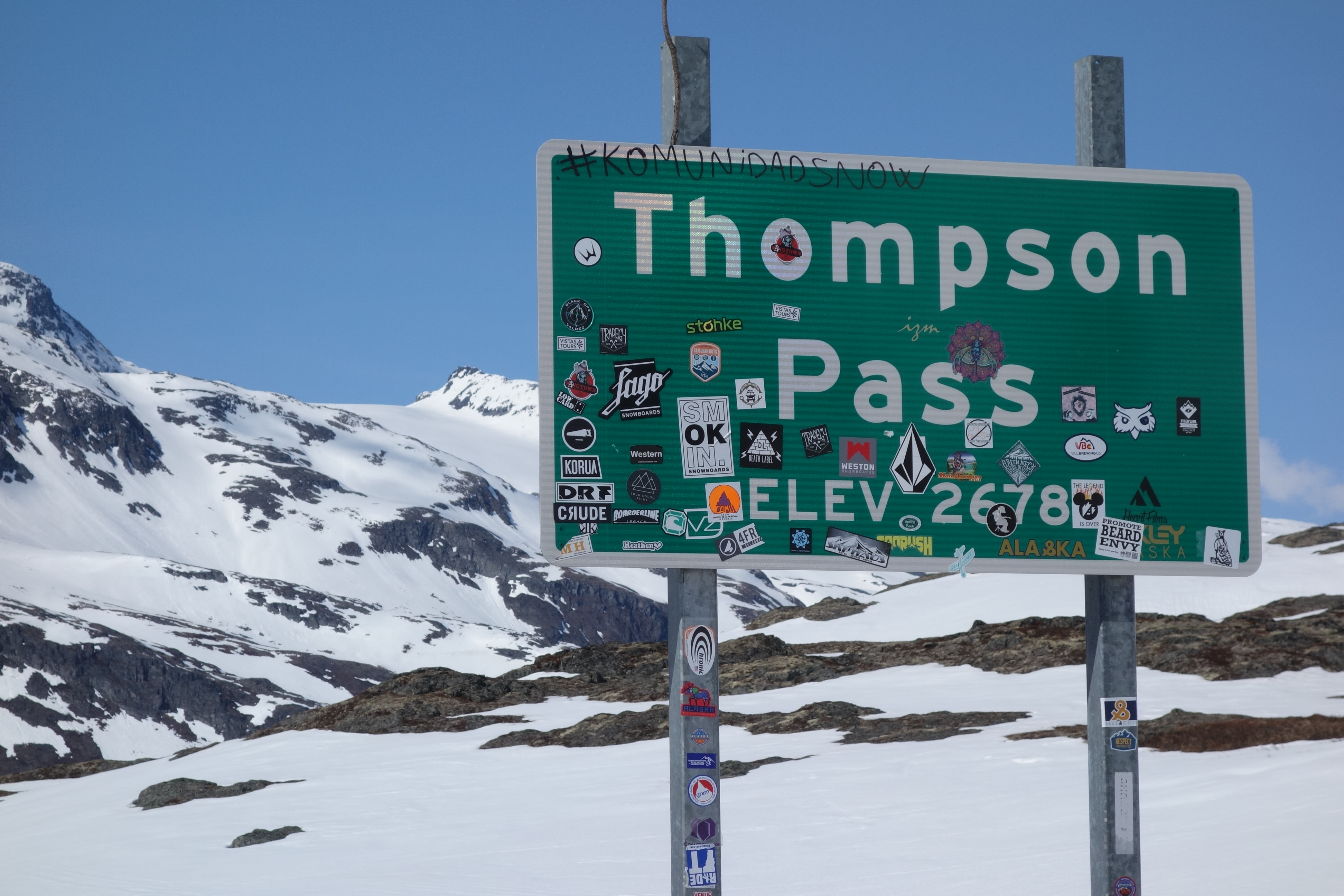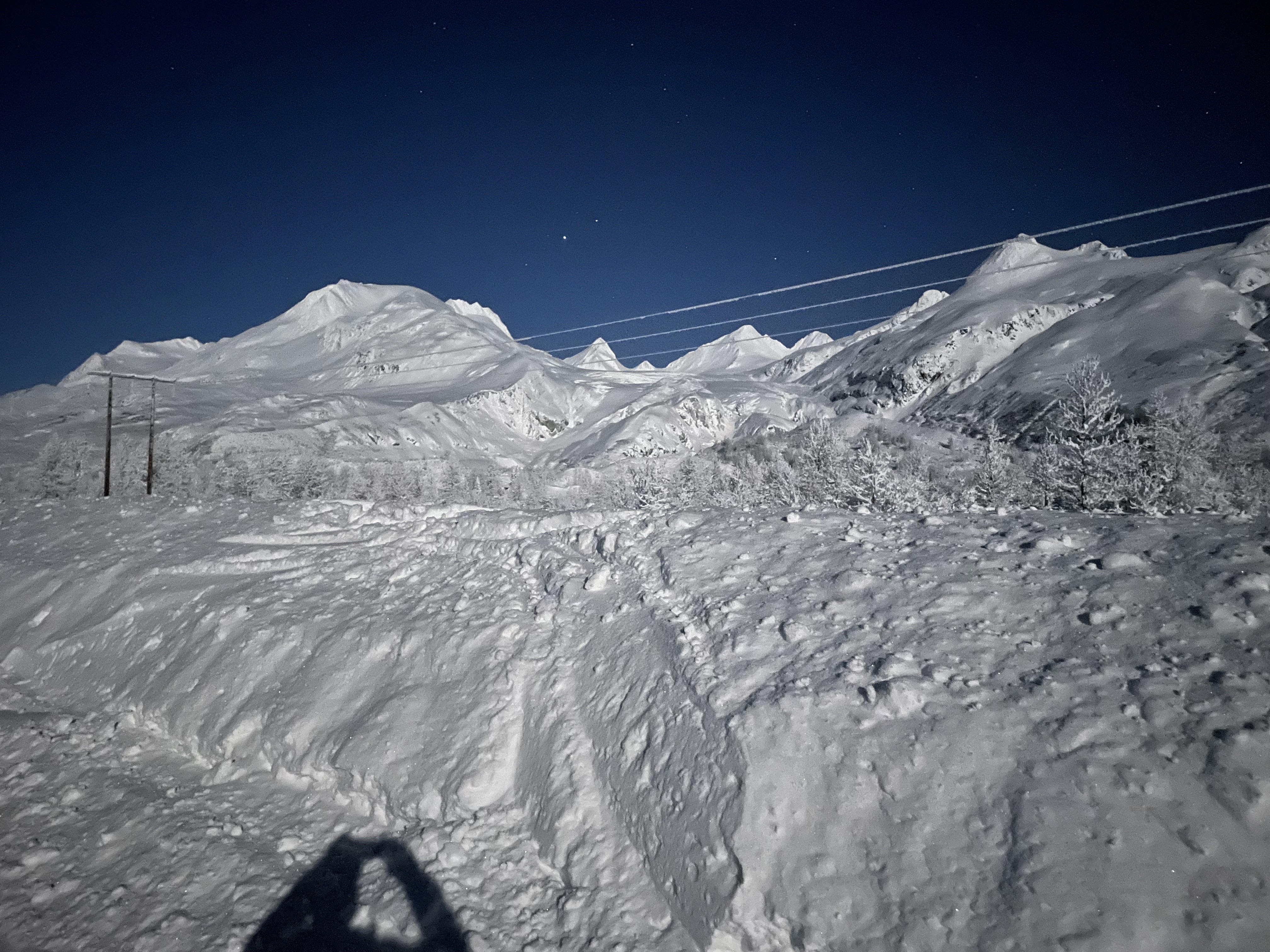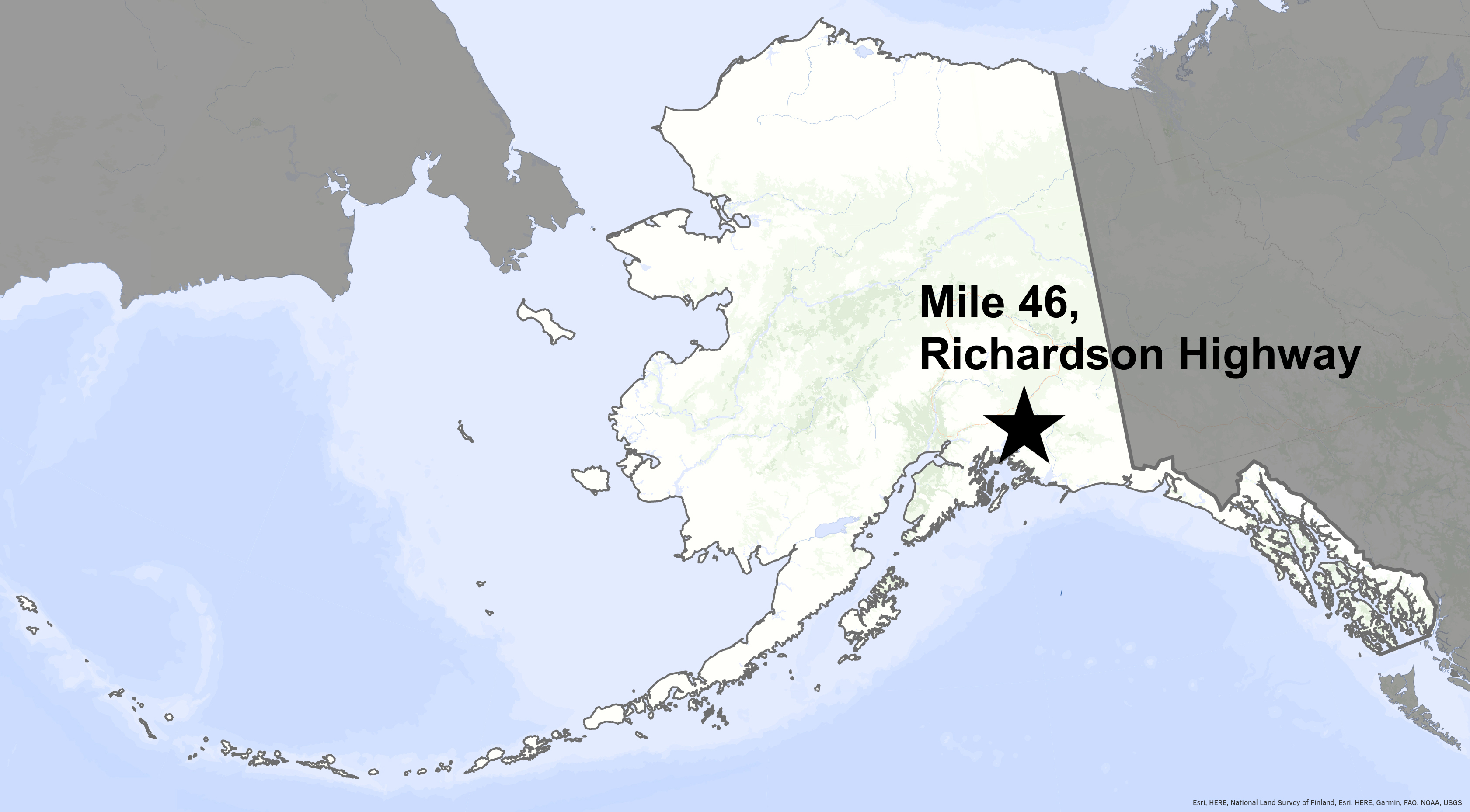The snowiest day in Alaska (and U.S.) history?
Ned Rozell
907-474-7488
Nov. 16, 2023
Last week, as most of Alaska joined the cryosphere and became snow-covered, one area again stood out as one of the snowiest places on the planet.
Twenty-one highway miles northeast of Thompson Pass, Alaska Department of Transportation workers noted that snow started falling just after midnight on Nov. 8, 2023.

Thompson Pass northeast of Valdez, shown here in April 2017, is one of the snowiest places on the planet.
By 7 a.m., they measured 2 feet of new snow that had coated their highway-maintenance station at Mile 46, the distance from the coastal town of Valdez.
At 4:45 p.m., 65 inches was on the ground. By 7:30, 72 inches of new snow had fallen in one storm.
That’s 6 feet. In less than one day!
It was darn close to a new Alaska (and United States) record.
That 6 feet of fluff fell on a major Alaska highway — No. 4, the Richardson. The paved road snakes 366 miles from Valdez to Fairbanks, requiring drivers to roll through passes of both the Chugach and Alaska ranges.
Snow falls everywhere along that road and most others in Alaska, but there are a few sweet spots where snow can pile up in staggering numbers. Including one that seems to hold America’s record for most snowfall in a 24-hour period.
That mountainous area is right where the 6 feet of snow fell a little over a week ago. About a mile from there, on Feb. 7, 1963, 6 feet, 6 inches of snow (78 inches) fell in a single day.
That is the snowfall total that Ralph Lane reported in 1963. Lane was the foreman at a highway camp 15 miles north of the extreme-snow area. He was also the weather observer for the National Weather Service there.
Climatologist Brian Brettschneider of Anchorage wondered if that astonishing 6-foot-6-inch snowfall in one day could really have happened. About a decade ago, he made a pilgrimage to the site of the reported 1963 measurement, which was a mile north of the present-day highway maintenance station.

Snow piles up in Thompson Pass northeast of Valdez in January 2023.
In his blog, Brettschneider reported some red flags involving the 1963 record. On that same February day, for example, an observer at nearby Thompson Pass recorded only 2.2 inches of snow.
“Since Thompson Pass averages over 500 inches per year and Mile 47 Camp averages 150-200 inches we are tempted to immediately disregard” Lane’s report, Brettschneider wrote.
Brettschneider also found it curious that in a column provided for comments next to the 78 that Lane had penned in, he wrote nothing about such a remarkable day.
But Brettschneider sleuthed more details about Lane and that snowy day in winter 1963. He interviewed a meteorologist who had once talked to Lane about that day and had taken notes. (Lane had retired to Baja, Mexico, and has long since passed away).
Lane told the man he remembered that incredible snow day as if it was yesterday. The flakes were big as silver dollars, he said. An avalanche he was able to escape blew over him and his snowplow.
Brettschneider offered a possible scenario for that record day: The strong, moist flow of the storm barreled in from the coastal south through the 14-mile-long Tiekel River valley. There, mountains lifted it 1,000 feet to collide with a cold air mass created by the Copper River Valley to the north.
After he weighed the considerable evidence he had unearthed about the 6-foot-6-inch snowfall, Brettschneider concluded that the event was within the realm of possibility. Maybe Lane’s measurement has been reinforced by last week’s snowfall in the same spot, less than a shovel blade short of the 1963 event.
That is what Brettschneider is hoping as he will soon try to clear up some confusion regarding the 1963 snowfall.

The star indicates the location of the highway maintenance station at Mile 46 on the Richardson Highway in Thompson Pass.
“A State Climate Extremes Committee determined that it is the Alaska state record,” Brettschneider said. “(But) when a National Climate Extremes Committee evaluated it for the national record, they rejected (Lane’s measurement) as being improbable.”
Using the 6-foot snowfall of Nov. 8, 2023, to argue that the 1963 reading is feasible, Brettschneider plans to resubmit the 1963 Richardson Highway snowfall to the climate extremes committee.
Though he expects it to take a while, Brettschneider may succeed in bringing the national record back to Alaska, with Lane’s 78 inches besting the currently listed 75.8-inch snowfall recorded in April 1921 in Silver Lake, Colorado.
Since the late 1970s, the University of Alaska Fairbanks' Geophysical Institute has provided this column free in cooperation with the UAF research community. Ned Rozell is a science writer for the Geophysical Institute.



